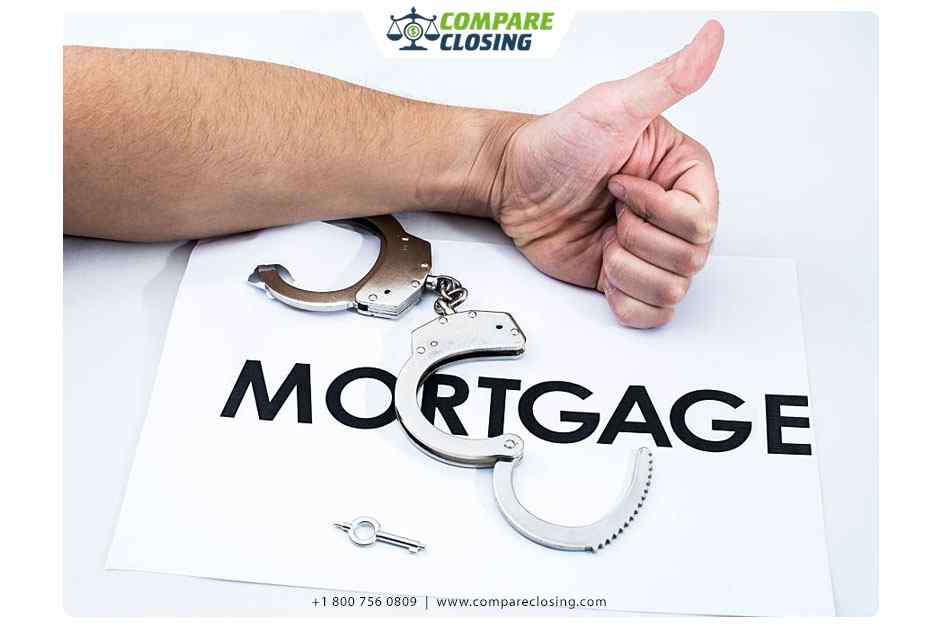Table of Contents
- What Are Netting Escrows & How Does It Work?: The Best Guide - January 2, 2024
- The Secret About Prescriptive Easement: Top Guide 1 Must Know - December 4, 2023
- About Home Equity Loans In Texas And How Can One Obtain It - November 27, 2023
Tips to Become Mortgage Free
Mortgage borrowers in order to cover the risks associated with a constant or increasing mortgage balance expect their home prices to appreciate.
If these homeowners can accumulate some equity in their homes, they use up their finances again through a home equity loan or cash-out refinance to make additional purchases, or pay down their debts, or even make additional investments.
Which could be risky. Let us see how to live mortgage free by having a mortgage that you can afford and build equity by paying it off quickly and enjoy a mortgage free living.
Making Mortgage Calculations
Every mortgage has an amortization schedule that lays out each scheduled mortgage payment in a chronological way right from the beginning of the first payment to the final payment.
Each payment is broken into an interest payment and a principal payment in the amortization schedule.
In the earlier part of the amortization schedule, a big percentage of the total payment interests, and a smaller percentage of the total payment is principal.
As you keep paying your mortgage, the amount towards interest decreases, and the amount allotted for principal increases and finally resulting in you have a mortgage free home.
Benefits of Accelerated Mortgage Payments
Another option to save money, in the long run, is by paying a separate additional amount every month towards the principal balance, which will shorten the life of the mortgage and reduce the total amount of interest to be paid and make you mortgage-free sooner.
For instance, if you have a 30 years fixed-rate mortgage, by paying an extra $300 each month for 24 months at the beginning of your mortgage, the principal balance gets reduced to greater than $7,200 (or $300 x 24).
So by the end of the second year, the actual amount saved by paying the additional $300 per month is $7,430.42.
And the benefits increase as they compound through the life of the mortgage. So you will finish off your loan in 21 years and 10 months instead of 360 months and enjoy a mortgage free living.
Cost-benefit Analysis
The real benefits of making the accelerated payments and becoming mortgage free are measured by calculating what is saved against what is given up.
So instead of making an extra payment of $300 every month toward the mortgage shown above, the same $300 could be used for something else. This is called a cost-benefit analysis.
Supposing the consumer with the mortgage is trying to decide whether to make the accelerated mortgage payments of $300 per month or have a look at other options.
If he is considering three choices let us calculate the costs versus the benefits for each option, which means what can be saved versus what is given up.
Considering that he cannot use the option of utilizing the equity in the home through a home equity loan.
Here we will not calculate the tax-deductibility of mortgage interest, which could change the numbers slightly.
The 3 Options for the Homeowner:
- Getting a consumer loan of $14,000 for five years with an interest rate of 10% for buying a boat.
- Paying off a credit card debt of $12,000 that carries a 15% annual rate (compounded daily).
- Investing in the stock market.
Option 1: Buying a Boat
Buying a boat is a depreciating asset. When you add household debt to purchase an illiquid, depreciating asset just adds more risk to the balance sheet.
He would need to understand that a $14,000 loan for the boat at an interest rate of 10% and a five-year term will increase the monthly payments by $297.46.
Cost-Benefit Breakdown
For the first five years of the mortgage instead of buying the boat, if the homeowner had made a $300 accelerated payment, it would have shortened the life of the mortgage by 47 months, with a saving of $2,935.06 by the end of 47 months.
With a discount rate of 3%, it has a present value of $59,501. If the accelerated mortgage payments are made, the principal balance of the mortgage would be reduced by an additional $21,599 at the end of the five years.
If he buys the boat, he spends $297.46 monthly for five years to own a $14,000 boat. The amount of $297 every month for 60 months equals out to a present value of $16,554.
By putting the $300 on the mortgage, he would save $59,501 and become mortgage-free. But by buying the boat he would be spending $16,554 to pay for a $14,000 boat, which will have a depreciating resale value.
Option 2: Paying off a $12,000 Credit Card Debt
Credit card interest is compounded daily, but the consumer is not making daily payments. The amortization schedule calculation shows that if he pays $300 per month for five years, then he can eliminate the credit card debt and be mortgage-free.
Now by making $300 each month of accelerated payments on the mortgage for the first five years the homeowner will make payment savings of $59,501.
And by paying $300 per month for five years on credit card debt with a 15% annual interest rate he can eliminate $12,000.
Paying off the credit card debt first is the most economical choice. Because, if the consumer selects accelerated mortgage payment the credit card debt will still keep adding interest and the outstanding balance will increase at a phenomenal rate.
Option 3: Invest in the Stock Market
Before we compare the accelerated mortgage payment savings to the returns in the stock market over the same time period, we must understand that stock market returns are extremely risky and volatile.
The historical average annual returns of the S&P 500 Index are close to 11%, but it keeps going up, and down.
Putting the $300 toward the mortgage means a confirmed present value of $59,501 and a reduction of $21,599 in the principal balance of the mortgage over the initial five years of the mortgage.
So he reduces the risks associated with debt and becomes mortgage-free.
But if he decides to invest $300 monthly over a five-year period in the stock market with an assumed average annual return of 11% will give a total portfolio value of $23,855 which is less than the value realized by making accelerated mortgage payments.
But if we assume that the stock amount continues to earn an annual return of 11% it could be a huge sum. Investing in the stock market in long term could be economical but the risk involved is huge.
Conclusion
Homeowners should understand that paying down mortgage debt lowers the risk and can be an economic advantage.
With an accelerated mortgage payment each dollar reduction in the outstanding principal balance of a mortgage reduces the interest amount for future payments.
Every dollar of principal paid early makes up for a mortgage free living.
Amanda Byford
Amanda Byford has bought and sold many houses in the past fifteen years and is actively managing an income property portfolio consisting of multi-family properties. During the buying and selling of these properties, she has gone through several different mortgage loan transactions. This experience and knowledge have helped her develop an avenue to guide consumers to their best available option by comparing lenders through the Compare Closing business.





